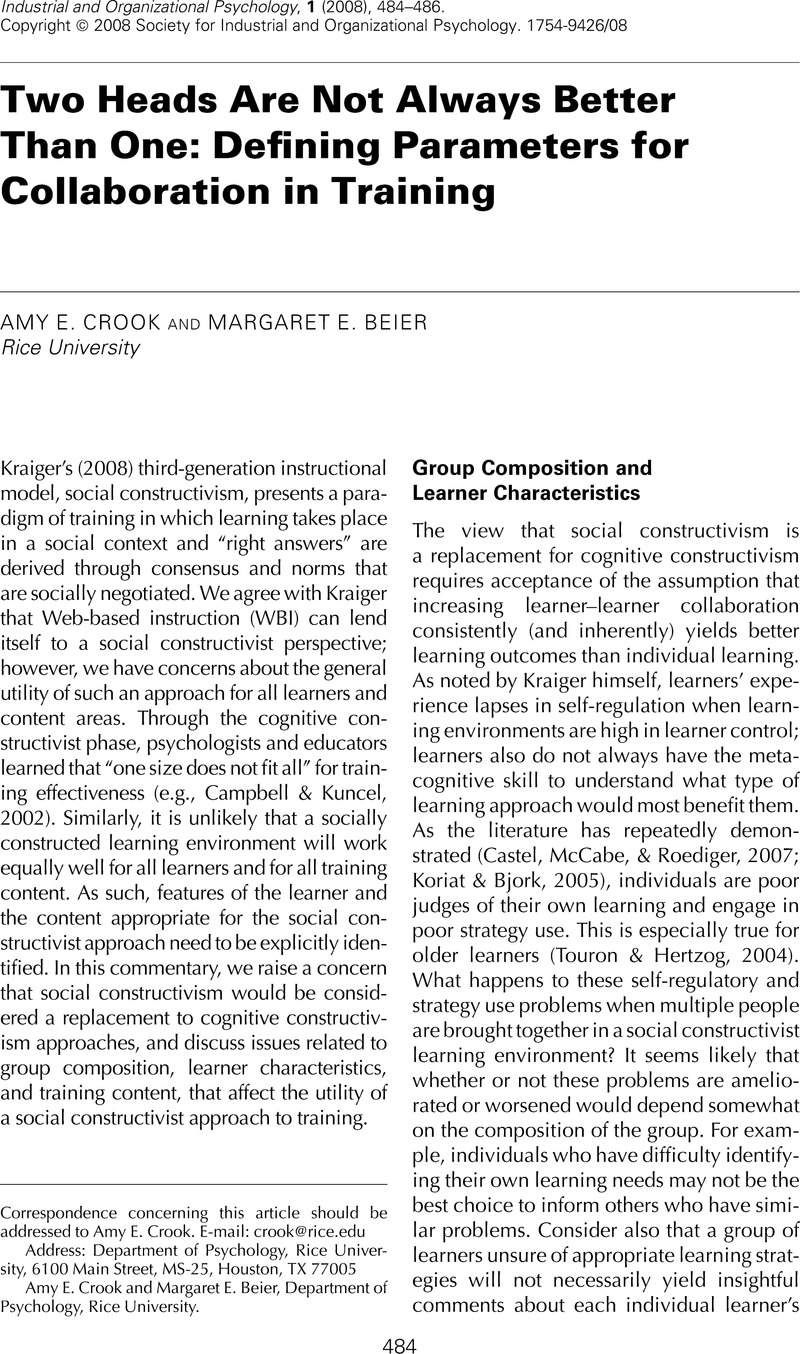Crossref Citations
This article has been cited by the following publications. This list is generated based on data provided by Crossref.
Kraiger, Kurt
2008.
Third-Generation Instructional Models: More About Guiding Development and Design Than Selecting Training Methods.
Industrial and Organizational Psychology,
Vol. 1,
Issue. 4,
p.
501.
Noe, Raymond A.
Tews, Michael J.
and
McConnell Dachner, Alison
2010.
Learner Engagement:A New Perspective for Enhancing Our Understanding of Learner Motivation and Workplace Learning.
Academy of Management Annals,
Vol. 4,
Issue. 1,
p.
279.
Noe, Raymond A.
Tews, Michael J.
and
McConnell Dachner, Alison
2010.
Learner Engagement:A New Perspective for Enhancing Our Understanding of Learner Motivation and Workplace Learning.
Academy of Management Annals,
Vol. 4,
Issue. 1,
p.
279.



